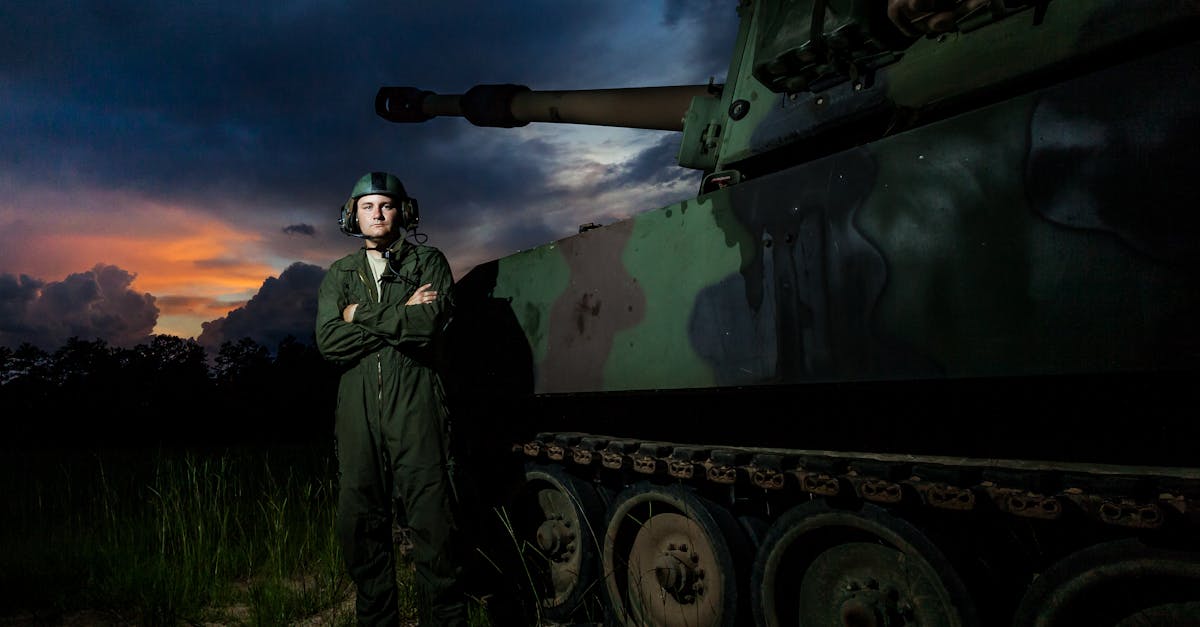Top Air-to-Air Combat Wins: Red Baron to Desert Storm

Air-to-air combat has evolved dramatically since the days of biplane dogfights over the trenches of World War I. Today's aerial duels involve cutting-edge technology and split-second decision-making. In this article, they'll dive into some of the most successful air-to-air combat missions in history, where skill, strategy, and sheer bravery led to victory high above the earth.
From the iconic Battle of Britain to the lesser-known but equally thrilling encounters in modern conflicts, these real-life examples highlight the prowess and evolution of aerial warfare. They'll explore missions that have become the stuff of legend, showcasing the pilots and aircraft that turned the tide of battle in the skies. Keep reading to discover tales of triumph that continue to inspire and educate in the field of military aviation.
The Battle of Britain
The Battle of Britain stands as a pivotal chapter in the annals of air-to-air combat. In 1940, the skies over Great Britain served as the stage for a crucial showdown between the Royal Air Force (RAF) and Nazi Germany's Luftwaffe. This intense conflict was significant not only for its scale but also for the fact that it was the first battle to be determined primarily through air power.
During this battle, the Luftwaffe aimed to achieve air supremacy as a precursor to a planned seaborne invasion called Operation Sea Lion. In response, the RAF mobilized a fleet of fighter planes consisting of the robust Hawker Hurricane and the nimble Supermarine Spitfire. The Hurricanes targeted bombers, while the Spitfires engaged German fighters, blending their attributes in a dynamic defense strategy.
The combat strategy was multifaceted:
- The RAF utilized an advanced radar system to detect incoming enemies, allowing British pilots to maximize their response time.
- They employed intricate communication networks orchestrating fighter command and control with precision.
- Pilots exhibited exceptional dogfighting skills, which chipped away at the German's numerical advantage.
The following table summarizes RAF’s fighter plane involvement:
| Aircraft | Number Used | Missions Flown |
|---|---|---|
| Hawker Hurricane | 1,715 | Predominant |
| Supermarine Spitfire | 1,310 | Supporting |
British resilience and tactical innovation during the Battle of Britain have been celebrated widely, heralding the RAF's role in thwarting Hitler's aggressive expansionism. The "few" – as Winston Churchill famously referred to the British pilots – not only secured the skies but also galvanized the spirit of an embattled nation. This period in air warfare history underscores the importance of strategic planning, technological edge, and the sheer courage of those behind the aircraft's controls.
The Red Baron's Legacy
Manfred von Richthofen, known as the Red Baron, became a legendary figure in the annals of military aviation history. His prowess in air-to-air combat during World War I established methods and tactics that would inform and shape future aerial battles. Richthofen's triumphs in the skies not only made him an ace but also provided real-life examples of successful air-to-air combat missions.
Under Richthofen's command, the German fighter squadron Jasta 11 achieved substantial success. He keenly understood the importance of adopting effective strategies, which included elements of surprise and altitude advantage—tactics that still resonate with today's fighter pilots. The Red Baron's 58 confirmed victories are a testament to the effectiveness of these methods.
- Utilized superior maneuvering skills
- Implemented formation tactics
- Mastered the art of the aerial dogfight
Although aircraft technology in von Richthofen's time was primitive compared to modern fighter planes, his legacy transcends the era's technological limitations. The aircraft he favored, such as the Fokker Dr.I, although not as advanced as later fighter planes, was nimble and allowed him to execute his tactics with precision.
Despite flying aircraft that lacked the speed and firepower of today's fighter planes, von Richthofen's achievements paved the way for the development of these more advanced machines. His emphasis on strategy, situational awareness, and pilot skill remain cornerstones of military aviation training programs.
As fighter planes evolved, the principles of air combat honed by pilots like the Red Baron remain integral. His legendary status inspires both the design of current aircraft and the training of pilots, ensuring that his impact on air-to-air combat lives on.
In the skies of World War I, the Red Baron not only set standards for individual skill but also demonstrated the critical importance of teamwork and communication, elements that are still crucial in modern air forces around the world.
The Dogfights of the Pacific Theater
World War II witnessed some of the most intense and strategic air-to-air combat missions in the history of aerial warfare, notably within the vast expanse of the Pacific Ocean. During this period, the Pacific Theater became a battleground for supremacy in the skies, where pilot skill and fighter plane capabilities were pushed to their limits.
In the early years of the war, Japanese aircraft held superiority with their Mitsubishi A6M Zero fighters, which were more maneuverable than most of their American counterparts. However, as the war progressed, the United States quickly learned from their initial encounters, leading to the introduction of advanced fighter planes like the F6F Hellcat and the F4U Corsair. These aircraft were designed to counter the agility of the Japanese Zero with improved firepower, speed, and armor.
The infamous Battle of Midway is a prime example of a pivotal air-to-air combat engagement in the Pacific. In this battle, the US navy pilots exhibited extraordinary bravery and aerial tactics to outmaneuver the Japanese forces. The use of dive-bombing and torpedo attacks by American aircraft played a significant role in turning the tide of the war in the Pacific.
Another significant series of engagements in the Pacific were the dogfights over the Solomon Islands, which featured relentless encounters between fighter pilot aces from both sides. The extensive use of radar technology by the U.S. Navy during night-time operations introduced a new dimension to air combat, facilitating the interception and shooting down of enemy bombers before they could reach their targets.
Throughout the Pacific Theater, the importance of having a well-coordinated strategy and superior fighter planes became increasingly clear. These air battles not only showcased the expertise and heroism of fighter pilots but also highlighted how critical aircraft evolution was in securing aerial dominance. Lessons learned from these dogfights continue to influence modern air force training and tactics, underscoring that while technology advances, the fundamental principles of air-to-air combat retain their significance.
The MiG Alley Showdowns
In the annals of military aviation history, few locales boast the reputation of MiG Alley. This notorious stretch of airspace along the border between North Korea and China was the stage for intense air-to-air combat during the Korean War. The strategic significance of MiG Alley was profound, not only as it served as a critical buffer zone for the Chinese border, but also as a haven for North Korea's allies to safely operate their advanced MiG-15 fighter planes.
The MiG-15, widely regarded as superior to any United Nations fighter at the beginning of the war, challenged UN forces to advance their tactics and technology. It wasn't long before the US introduced a worthy adversary: the F-86 Sabre. These Sabre jets were engineered to counter the MiG-15's strengths and helped level the playing field. Pilots like Major George A. Davis Jr. became aces, accumulating a significant number of air-to-air victories in the frigid Korean skies.
The showdowns in MiG Alley tested pilot skill and aircraft capability like never before. Dogfights were fast-paced and lethal, often hinging on split-second decisions and razor-thin margins of superiority.
- The F-86 featured radar-guided gunsights that improved targeting accuracy.
- Maneuverability and speed were crucial in these encounters, leading to innovations in jet design and aerodynamics.
Evolutions in air combat strategy were rapid, as pilots on both sides adapted to the strengths and weaknesses of their adversaries. They knew that mastery of MiG Alley meant the difference between national security and vulnerability.
As the air battles raged, military leaders observed that the success of air-to-air missions wasn't just about the prowess of fighter planes, but also the strategic and coordinated efforts of the pilots and their ground support teams. The orchestrated chaos above MiG Alley was more than just about technological might; it was a chess game fought at supersonic speeds, where every move had potentially historical consequences. The tales from these aerial clashes have fueled generations of fighter pilot training programs, ensuring the legacies of these airmen live on.
Modern Air Superiority: Operation Desert Storm
Operation Desert Storm showcased a pivotal moment in modern warfare, highlighting the evolution of air-to-air combat. In the early 1990s, the Gulf War became the stage for demonstrating a new era of fighter planes and technology.
One of the most notable aspects of this conflict was the overwhelming air superiority established by Coalition forces, primarily through the use of advanced fighter planes like the F-15 Eagle and F-16 Fighting Falcon. These aircraft were not only superior due to their innovative design but also because of their integrated systems and capable pilots.
Infrared tracking and beyond-visual-range missiles gave Coalition pilots a formidable advantage over their adversaries, significantly reducing the risk of close-range dogfights that had characterized previous air conflicts. Furthermore, the implementation of modern radar systems allowed for better identification of enemy aircraft, crucial for split-second decisions in the sky.
The air campaign of Operation Desert Storm lasted just over a month, with Coalition forces conducting more than 100,000 sorties. Noteworthy is the fact that the F-15 Eagles were particularly successful, accounting for 36 of the 39 Coalition air-to-air victories without a single loss. The following table outlines the critical statistics representing the achievements of Coalition fighter planes during the operation:
| Aircraft Type | Air-to-Air Victories | Losses |
|---|---|---|
| F-15 Eagle | 36 | 0 |
| F-16 Fighting Falcon | 2 | 0 |
| Others | 1 | N/A |
This overwhelming display of air power not only crippled the enemy’s capabilities but also served as a stark reminder of the importance of air dominance. Advancements in stealth technology further augmented the Coalition’s tactical variety, as they could now carry out operations with reduced chances of detection. Combat missions were not only about speed and firepower; electronic warfare and intelligence played a crucial role, with AWACS (Airborne Warning and Control System) guiding and protecting the fighter planes in their decisive roles.
As air-to-air encounters developed through the mid-20th century to the modern-day, the strategy shifted from reactive dogfighting to preemptive strikes. Operation Desert Storm underscored this shift with an approach centered on technology, training, and tactical command, paving the way for contemporary air-combat doctrine.
Conclusion
The tales of the Red Baron's strategic prowess, the intense Pacific Theater battles, and the technological showdowns of MiG Alley have illustrated the evolution of air-to-air combat. It's clear that success in the skies is as much about the pilot's skill as it is about technological advancements and strategic teamwork. From the F-86 Sabre's debut to the dominance of the F-15 Eagles in Operation Desert Storm, these stories underscore the shift in air combat. They highlight a move from the reactive close-quarters dogfights of the past to the preemptive strikes that define modern warfare. The relentless pursuit of air superiority remains a cornerstone of military strategy, proving that control of the skies is often the key to victory on the battlefield.






